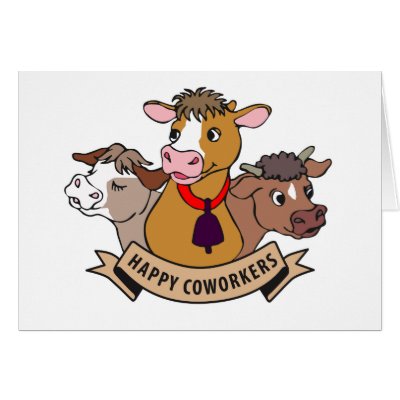 The employee-employer value proposition is like a romantic relationship (besides the lawsuit-inducing inappropriate behaviors of course!)--you both have something to offer, ideas for an ideal candidate/position, and the goal of hopefully helping each other grow.
The employee-employer value proposition is like a romantic relationship (besides the lawsuit-inducing inappropriate behaviors of course!)--you both have something to offer, ideas for an ideal candidate/position, and the goal of hopefully helping each other grow.So, just like a relationship, those first few communications are key to success. As work/life professionals, we spend so much time ensuring that we're creating healthy & productive workplaces, chock full of programs and policies aimed at helping employees find the fit between work and family that works for them. But we rarely focus on how stressed out, overworked, unbalanced individuals got there, and although a good deal of it has to do with life changes (children, elder care, school, etc.) I think a lot of it could be solved in the recruiting process:
- Clearly Communicate Organizational Culture on Your Careers Site. If you do truly have a culture that supports flexibility, let prospective employees know-but if you are not yet there, then don't include it on the site. Highlight your strengths to attract candidates, but beefing up your weaknesses will only lead to conflict and confusion once employees are settled. If you do have a long hours culture,
- Ensure that Job Descriptions and Expectations are Clear and Complete (to the best of your ability). Of course, jobs morph and change depending on the employee's strengths, but make sure that future employees know what it will take to be successful in the position they're applying to. If putting in a lot of face time and extra work will help them get ahead with that manager in that position, then find a (still attractive) way to say that.
- Hire Leaders Who Fit With Where You'd Like Your Culture to Be, not One's Who Will Continue to Be Sticks in the Mud. If you've already gotten the support from senior leadership on work/life and wellness programs, but are getting bogged down with skeptical middle management (which is almost inevitable), recruitment can help. Make sure that they know the directions the organization is looking to go in-not only from a bottom-line perspective, but culturally. If they know that senior leaders are all about work/life, hire middle managers who are too. Include this as hiring criteria to make sure that the company can move in the right direction.
- Allow for Informational Interviewing or Shadowing. One of the best ways for potential employees to find out if they fit with the culture of the organization (and for you to see how they fit as well) is to connect them with another employee within the organization for informational interviews or shadowing. Think of this as meeting a first date for coffee-a low pressure, quick way to get to know each other and whether a good fit can be achieved.
Work/life and wellness programs are so difficult to communicate because, although these are topics that affect everyone, they affect everyone differently. Therefore, there are hundreds of different entry points with the same goal of increasing utilization of a policy or program. So reach out to Recruiting-work/life is an extremely attractive recruiting tool, and they'll be bringing in the future leadership that can help support the work that you do.









